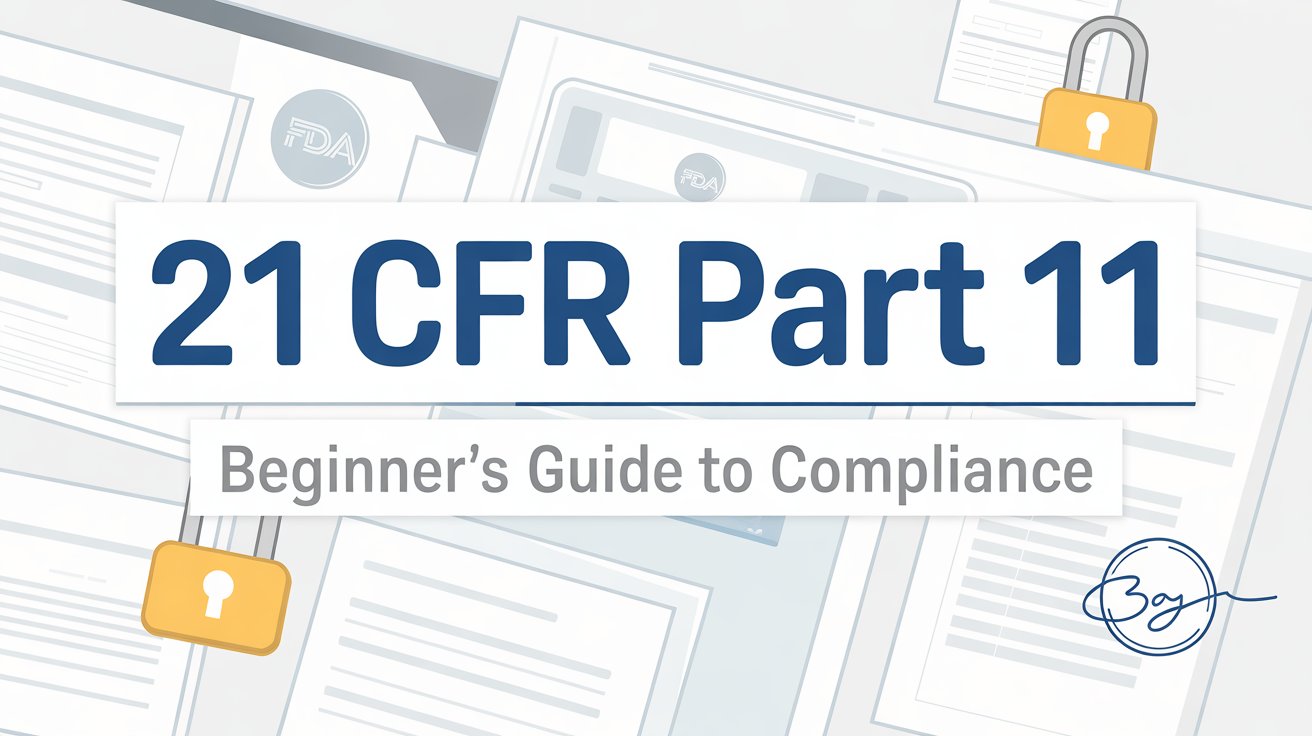No products in the cart.
21 CFR Part 11 Explained: A Simple Guide for Beginners

Introduction: Why 21 CFR Part 11 Matters
If you work in the pharmaceutical, biotech, or medical device industry, you’ve probably heard of 21 CFR Part 11. This regulation governs how electronic records and signatures should be handled to ensure FDA compliance. But for many beginners, understanding this rule can feel overwhelming. This guide breaks it down simply, with practical tips and real-world examples.
What is 21 CFR Part 11?
21 CFR Part 11 is a part of the Code of Federal Regulations established by the U.S. Food and Drug Administration (FDA). It sets the criteria under which electronic records and electronic signatures are considered trustworthy, reliable, and equivalent to paper records.
Core Objective:
To ensure that electronic records and signatures used in regulated industries are:
- Authentic
- Reliable
- Confidential
- Secure
Who Needs to Comply?
The regulation applies to:
- Pharmaceutical companies
- Biotech firms
- Medical device manufacturers
- Contract research organizations (CROs)
- Clinical labs
If your organization uses any GxP systems (Good Practice systems), such as GMP, GCP, or GLP systems, then you must comply with 21 CFR Part 11.
Key Components of 21 CFR Part 11
1. Electronic Records
Must be maintained in a way that ensures:
- Data integrity
- Accurate and complete data entry
- Traceability and audit trails
2. Electronic Signatures
Must be:
- Unique to one individual
- Verified and authorized
- Time-stamped
3. Audit Trails
Every change in the system should:
- Be time-stamped
- Record who made the change
- Include reason for the change
4. System Validation
Software systems must be validated to show they consistently produce accurate and reliable results.
5. Access Control
Only authorized personnel should have access to systems that fall under the regulation.
How to Achieve 21 CFR Part 11 Compliance
Step 1: Perform a Gap Assessment
- Identify all systems handling electronic records and signatures
- Check current practices against 21 CFR Part 11 requirements
Step 2: Implement Technical Controls
- Enable audit trails
- Implement password and access controls
- Use electronic signature features
Step 3: Validate Systems
- Document all software validations
- Maintain SOPs (Standard Operating Procedures)
Step 4: Train Employees
- Train users on compliance requirements
- Document training logs
Step 5: Create and Maintain SOPs
- Procedures for record retention, access, audit trails, and signatures
Real-World Example: Pharma Company Going Paperless
A mid-sized pharmaceutical company transitioned from paper-based to electronic batch records. Using a validated Manufacturing Execution System (MES), they:
- Enabled audit trails
- Implemented electronic signatures
- Reduced review time by 40%
- Improved FDA compliance during audits
Common Mistakes and How to Avoid Them
- Ignoring validation: Always validate software used for regulated tasks.
- Weak passwords or access control: Set role-based access.
- Inadequate audit trails: Systems must log all user actions.
Frequently Asked Questions (FAQs)
Q1: What does “Part 11” stand for?
It refers to Part 11 of Title 21 in the Code of Federal Regulations.
Q2: Is compliance mandatory?
Yes, for companies using electronic records and signatures under FDA regulations.
Q3: What systems are covered?
Any system used in regulated environments like LIMS, MES, ERP, and EDMS.
Q4: Can we use cloud-based systems?
Yes, provided the vendor supports compliance and validation documentation.
Conclusion: Be Audit-Ready with 21 CFR Part 11
21 CFR Part 11 is crucial for any pharma or life sciences company using digital systems. By following the guidelines, training staff, and maintaining robust documentation, your organization can be confident in both internal quality and FDA compliance.
✅ Call to Action:
Need help assessing your current systems for 21 CFR Part 11 compliance? Contact our pharma compliance experts today !
Read More:


